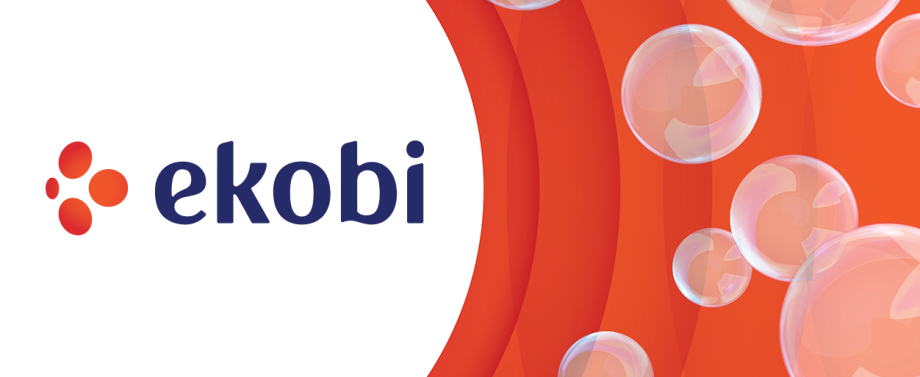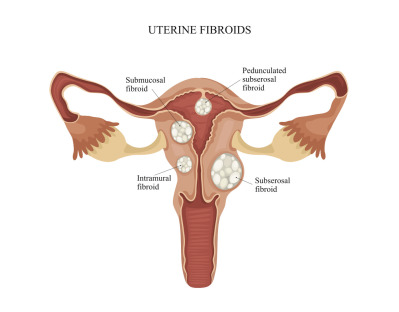Uterine Fibroids
What are Uterine Fibroids?
Uterine fibroids are the most common benign tumors in women. Both age and race are risk factors for fibroids. Women are usually diagnosed with fibroids in the 30’s or 40’s. Fibroids are present in 40% of women by age 35 and almost 70% by age 50. African-American women are more likely to experience uterine fibroids, whose incidence of fibroids is 60% by age 35 and more than 80% at age 50 (1).
What are the symptoms of Uterine Fibroids?
Between 20-50% of fibroids are symptomatic requiring treatment (2). Symptoms may include:
- Abnormal uterine bleeding – heavy bleeding, prolonged bleeding, bleeding between periods, frequent periods, irregular periods
- Pelvic Pressure and Pain
- Painful sexual intercourse
- Infertility
- Recurrent Pregnancy Loss
- Significant Reduction in Quality of Life
Over 50% of women with symptomatic fibroids report that symptoms negatively impact their lives, influencing their intimate relationships, family, and performance at work (3).
What are the treatments for Uterine Fibroids?
The Society of Obstetricians and Gynaecologists of Canada (SOGC) recommended in 2015 the treatment of fibroids must be individualized and the following factors considered: symptomatology, size and location of fibroids, age, desire for future pregnancy or preservation of the uterus, the availability of therapy, and the experience of the therapist (4).
Treatments for symptomatic fibroids include:
- Medications
- Hysterectomy (removal of the uterus)
- Myomectomy (surgical removal of the fibroid)
- MRI-guided Focused Ultrasound Surgery
- Endometrial ablation (lining of the uterus destroyed to cut down on bleeding linked to small fibroids)
- Uterine Fibroid Embolization / Uterine Artery Embolization
Be Informed:
Studies show most women are not fully aware of all their treatment options for uterine fibroids (5) and are often only given the choice of hysterectomy, which is complete removal of the uterus. Up to 30% of hysterectomies are performed for uterine fibroids. Uterus-sparing treatments, like Uterine Fibroid Embolization (UFE), have fewer complications, shorter hospital stays and higher patient satisfaction when compared to hysterectomy (6). Further, the Canadian Agency for Drugs and Technologies in Health (CADTH) found that UFE was more cost-effective than hysterectomy (5).
What is Uterine Fibroid Embolization?
Uterine Fibroid Embolization (UFE) is a well-established, minimally invasive procedure for treating uterine fibroids. Uterine artery embolization has been effectively performed for over 20 years to treat uterine fibroids. UFE is also known as Uterine Artery Embolization (UAE).
UFE is performed by a specialist, called an Interventional Radiologist. Typically, treatment takes less than 1 hour and can be performed on an outpatient basis. The interventional radiologist makes a small incision in the groin area or wrist and then uses imaging to guide a catheter to the blood vessels that feed the fibroid(s). Small spheres are then injected into the vessel in order to create a physical blockage that stops the flow of blood to the fibroid(s). This starves the fibroid(s) of oxygen and nutrients. The therapeutic effect is the fibroid shrinks and dies leading to symptom improvement. Studies demonstrate that UFE is effective at improving symptoms in 71-92% of patients and greater than 90% of patients report that they are satisfied with procedure (7).
Advantages:
- High level of success
- Shorter recovery time
- Minimal risk of complications
- Preserves the uterus
Risks:
Although complications from UFE are rare, all medical procedures carry some inherent risk. All potential risks and complications associated with this procedure should be discussed with your doctor.
Why Ekobi® Embolization Microspheres?
Ekobi Embolization Microspheres are Health Canada approved for the treatment of uterine fibroids. Ekobi is the only approved biodegradable embolization microsphere approved for use for treatment of uterine fibroids. Unlike other embolic agents, which are permanent implants and remain in the women’s body for life, Ekobi safely biodegrades over 4-6 months and is completely eliminated from the body.
Ekobi microspheres are the only biodegradable embolic microsphere detectable in the body with ultrasound. This unique characteristic of Ekobi allows physicians to visualize the microspheres in real-time, allowing physicians to better monitor the procedure.
A clinical study conducted at the University of Alberta in Edmonton demonstrated safety and efficacy of Ekobi Embolization Microspheres to treat uterine fibroids. Patients reported a significant improvement in their symptoms and quality of life at 6 months post-treatment.
Learn about a real patient’s experience with Ekobi:
Is Uterine Fibroid Embolization right for me?
To find out if UFE is right for you consult with your physician. Use these links to find a UFE specialist in your area:
- Society of Interventional Radiology Find a Doctor https://www.sirweb.org/patient-center/doctor-finder/
- Canadian Association for Interventional Radiology http://www.cairweb.ca/en/ufe/
What Resources Are Available?
- Society of Interventional Radiology - https://www.sirweb.org/patient-center/uterine-fibroids/
- RadiologyInfo.org - https://www.radiologyinfo.org/en/info.cfm?pg=ufe
References:
1. Day Baird D, Dunson DB, Hill MC, Cousins D, Schectman JM. High cumulative incidence of uterine leiomyoma in black and white women: ultrasound evidence. Am J Obstet Gynecol. 2003;188(1):100–107.
2. Stewart EA, Cookson CL, Gandolfo RA, Schulze-Rath R. Epidemiology of uterine fibroids: a systematic review. BJOG 2017; 124(1)1501-1512.
3. Zimmermann A, Bernuit D, Gerlinger C, Schaefers, Geppert K. Prevalence, symptoms and management of uterine fibroids: an international internet-based survey of 21,746 women. BMC Women’s Health 2012; 12(6).
4. SOGC clinical practice guidelines. Uterine fibroid embolization (UFE). Number 150 October 2004. Society of Obstetricians and Gynaecologists of Canada.
5. Marsh E, Al-Hendy A, Kappus D, Galitsky A, Stewart E, Kerolous M. Bioburden, Prevalence, and Treatment of Uterine Fibroids: A Survey of U.S. Women. Journal of Women’s Health 2018; 27 11)
6. Uterine-Preserving Interventions for the Management of Symptomatic Uterine Fibroids: A systematic Review of Clinical and Cost-Effectiveness. January 2016. CADTH
7. Raikhlin A, Baerlocher M, Asch M. Uterine fibroid embolization. CME update for family physicians. Canadian Family Physician 2007 53 (February)



